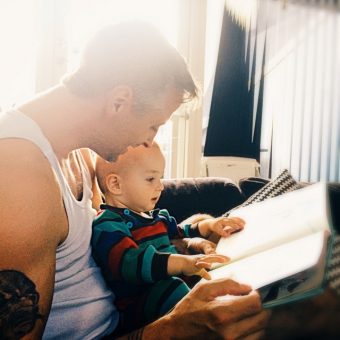Cute Cuddles, Family Time, Parenting
What Order Does a Baby’s Senses Develop?
Right from conception, many of a baby’s senses are developing, continuing to do so through the pregnancy. When born, some of their senses are fully formed, while others will advance further as the baby grows.
Understanding the Developmental Order of a Baby’s Senses
There are five senses your baby develops; touch, taste, smell, hearing and sight. We discuss each one and their order of development, helping you understand your baby even more!
Touch
- A baby’s sense of touch is one of the earliest to emerge, with some touch acknowledgement at three weeks. By the 20th week of pregnancy, this is further developed to where the baby can feel and respond to touch over the majority of their body, except for the very top of their head. At about eight months, a baby can identify a nearby object by touch alone.
Taste
- An unborn child’s taste buds first begin to emerge at about the 8-week stage of development. At the 13 – 15 week stage, they have similar taste buds to adults. Anything the mother eats while the baby is inside the womb will flavour the amniotic fluid that the baby consumes. A newborn baby has an inclination to sweet tastes over sour or bitter flavours.
Smell
- A sense of smell begins to happen around the same time that the baby has the taste function. From the day the baby is born, it can identify it’s Mum by smell alone, especially the breast milk. That’s why a baby will instinctively head for the breast after it has been born.
Hearing
- The hearing system is fully-developed at 20 weeks gestation. At 23 weeks, an unborn baby can respond to loud noises or even begin to hiccup or kick if they hear a loud noise. The baby can identify the voices of family members it had heard when it was in the womb too. Babies with normal hearing also startle in response to loud sounds. Newborn babies do prefer a higher pitched voice such as their mother, over a lower pitched voice of their father.
Eyesight:
- A newborn baby is very short-sighted, able to only see about8 to 12 inches in front of their face. Newborn babies eyes are susceptible to bright lights, closing their eyes instead of looking at the light. At one-month-old, a newborn can see colours but often prefers black and white toys and objects to look at. By about seven months, a baby’s eyesight has matured, have developed their hand-eye coordination and depth perception to be able to reach for toys outside their immediate area. Their focus will improve over the next two to three years as their eyes mature and they can see more clearly. A great way to develop your baby’s eyesight is hanging a baby mobile above their crib or changing table.
To help your baby develop their senses, provide them with plenty of stimulation. Talk about what you see and hear, encourage your child to smell and touch objects and when they are old enough, to taste different flavours and textures. For some personalised suggestions on baby toys and accessories, feel free to contact your Cute Cuddles team today!
